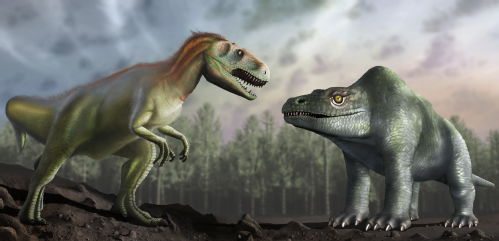Warwick research sheds light on earliest-found dinosaur fossil
Research conducted at Warwick by WMG (Warwick Manufacturing Group) has shed new light on the world’s oldest dinosaur fossil. Cutting edge technology was used to reveal new details about the Megalosaurus specimen.
The research was lead by Warwick professor Mark Williams in partnership with the Oxford University Museum of Natural History. CT scanning technology and 3D analysis software were used in tandem to reveal evidence of the extensive repair work attempted on the specimen and also uncovered new teach inside the jaw.
These new discoveries are significant as the specimen is of particular biological and cultural importance. The fossil was unearthed in 1824 by geologist William Buckford and lead to the Megalosaurus being the first described and named dinosaur.
It is also a fantastic example of a dinosaur fossil discovered in Britain originating from the Oxfordshire village of Satchwell. The Megalosaurus was a carnivorous species, being around nine meters in length and weighing over a ton.
300 X-Ray images were taken as part of the research allowing scientists to see inside the dinosaur’s jaw bone. The CT scanner used works in the same way as those used to scan the human body, revealing what is unobservable to the naked eye.
In this instance new teeth were discovered while the extent of previous repairs to the fossil were revealed. Two separate phases of restoration were identifiable, challenging the previous belief that one set of repairs was made at some point between 1927 and 1931.
This new knowledge will help the museum when making decisions about the future restoration of the iconic specimen, prolonging the fossil’s life span.
It also marks another step in the adoption of cutting edge technology in the analysis of natural history, as Professor Williams states: “Being able to the use state of the art technology normally reserved for aerospace and automotive engineering… was a fantastic opportunity.”
Williams further commented that the project had been an “incredible experience” for someone who had been “fascinated with dinosaurs’ ever since childhood and who remembered reading about the Megalosaurus specimen when growing up.

Comments